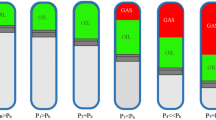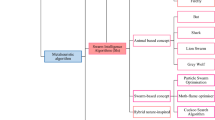Abstract
Reservoir system reliability is the ability of reservoir to perform its required functions under stated conditions for a specified period of time. In classical method of reservoir system reliability analysis, the operation policy is used in a simple simulation model, considering the historical/synthetic inflow series and a number of physical bounds on a reservoir system. This type of reliability analysis assumes a reservoir system as fully failed or functioning, called binary state assumption. A number of researchers from various research backgrounds have shown that the binary state assumption in the traditional reliability theory is not extensively acceptable. Our approach to tackle the present problem space is to implement the algorithm of advance first order second moment (AFOSM) method. In this new method, the inflow and reservoir storage are considered as uncertain variables. The mean, variance and covariance of uncertain variables are determined using moment values of reservoir state variables. For this purpose, a stochastic optimization model developed based on the constraint state formulation is applied. The proposed model of reliability analysis is used to a real case study in Iran. As a result, monthly probabilities of water allocation were computed from AFOSM method, and the outputs were compared with those from Monte Carlo method. The comparison shows that the outputs from AFOSM method are similar to those from the Monte Carlo method. In term of practical use of this study, the proposed method is appropriate to determine the monthly probability of failure in water allocation without the aid of simulation.





Similar content being viewed by others
References
Ang AHS, Tang WH (1984) Probability concepts in engineering, planning and design, vol II. Wiley, New York
Antreich KJ, Graeb HE, Wieser CU (1994) Circuit analysis and optimization driven by worst-case distances. IEEE Trans Comput Aided Des 13:57–71
Bogardi J, Kundzewicz ZW (2002) Risk, reliability, uncertainty and robustness of water resource systems (International Hydrology Series). Cambridge University Press, Cambridge
Brown RT, Barnwell TO (1987) The enhanced stream water quality model QUAL2E and QUAL2E-UNCAS. EPAI600-3-87/007, U.S. Environmental Protection Agency
Cai X (1999) Modeling framework for sustainable water resources management. Unpublished Ph.D. dissertation, Univ. Texas at Austin
Cailin Li, Huijun Xu, Xiaohui Y (2008) Research on risk in long-term reservoir dynamic probability scheduling. In: Third international conference on natural computation IEEE Xplore. Haikou, Hainan, China, IEEE Computer Society
Ellingwood B, Galambos TV, MacGregor, JG, Cornell CA (1980) Development of a probability based load criterion for American standard A58: building code requirements for minimum design loads in buildings and other structures. NBS Special Publication, 477, June
Fletcher SG, Ponnambalam K (2008) Stochastic control of reservoir systems using indicator functions: new enhancements. Water Resour Res 44: W12438, 1–10
Ganji A (1999) Streamflow modeling and analysis of Mollasadra and Salman Farsi reservoirs using time series models of SPIGOT. M.S. Thesis, University of Shiraz
Ganji A, Karamouz M, Khalili D (2007a) Development of stochastic conflict resolution models for reservoir operation, II. The value of players’ information availability and cooperative behavior. Adv Water Resour 30:157–168
Ganji A, Khalili D, Karamouz M (2007b) Development of stochastic conflict resolution models for reservoir operation. I. The perfect symmetric stochastic model. Adv Water Resour 30:528–542
Ganji A, Ponnambalam K, Khalili D, Karamouz M (2008) Grain yield reliability analysis with crop water demand uncertainty. Stoch Env Res Risk Assess 20(4):259–277
Han K-Y, Kim S-H, Bae D-H (2001) Stochastic water quality analysis using reliability method. J Am Water Resour Assoc 37(3):695–708
Hasofer AM, Lind CN (1974a) An exact invariant first-order reliability format. J Eng Mech ASCE 100:111–121
Hasofer AM, Lind NC (1974b) Exact and invariant second-moment code format. J Eng Mech Div Am Soc Civil Eng 100:111–121
Homayoun-far M, Ganji A, Khalili D, Harris J (2010) Two solution methods for dynamic game in reservoir operation. Adv Water Resour, in press, doi:10.1016/j.advwatres.2010.04.001
Karamouz M, Szidarovszky F, Zahraie B (2003) Water resources system analysis. Lewis Publishers, Boca Raton
Li C, Xu H, Yuan X (2007) Research on risk in long-term reservoir dynamic probability scheduling. In: Proceedings of the third international conference on natural computation—vol 05, IEEE Computer Society Washington, DC, USA, pp 84–87
Li YP, Huang GH, Chen X (2009) Multistage scenario-based interval-stochastic programming for planning water resources allocation. Stoch Env Res Risk Assess 23(6):781–792
Liu PL, Der Kiureghian A (1986) Optimization algorithms for structural reliability analysis. Technical Report UCB/SESM-86/09, Department of Civil Engineering, Division of Structural Engineering and Structural Mechanics, University of California, Berkeley
Loucks DP, Stedinger JR, Haith DA (1988) Water resources system planning and analysis. Prentice-Hall, England Cliffs
Madsen HO, Krenk S, Lind NC (1986) Methods of structural safety. Prentice-Hall Inc, Englewood Cliff
Mailhot A, Villeneuve J-P (2003) Mean-value second-order uncertainty analysis method: application to water quality modeling. Adv Water Res 26:491–499
Melchers RE (1987) Structural reliability, analysis and prediction. Ellis Horwood Series in Civil Engineering-Structural Engineering Section, Ellis Horwood
Melching CS, Yen BC, Wenzel HG Jr (1990) A reliability estimation in modelling watershed runoff with uncertainties. Water Resour Res 26(10):2275–2286
Mirakbari M, Ganji A (2010) Reliability analysis of a rangeland system: the application of Profust theory. Stoch Env Res Risk Assess 24(3):399–409
Murray-Rust H, Sally H, Salemi HR, Mamanpoush A (2000) An overview of the hydrology of the Zayandeh Rud Basin, Esfahan Province, Iran. IAERI-IWMI Research Reports 3
Park Y, Yeghiazarian L, Stedinger JR, Montemagno CD (2009) Numerical approach to cryptosporidium risk assessment using reliability method. J Stoch Environ Res Risk Assess 22(2):169–183
Rackwitz R, Fiessler B (1978) Structural reliability under combined load sequences. Comput Struct 9:489–494
Sally H, Murray-Rust H, Mamanpoush AR, Akbari M (2001) Water supply and demand in four major irrigation systems in the Zayandeh-Rud Basin, Iran. IAERI-IWMI Research Reports 8
Tiedeman C, Gorelick SM (1993) Analysis of uncertainty in optimal groundwater contaminates capture design. Water Resour Res 29(7):2139–2153
Tung YK (1990) Evaluating the probability of violating dissolved oxygen standard. Ecol Model 51:193–204
Tung YK (1996) Uncertainty and reliability analysis in water resources engineering. Universities Council on Water Resources, Issue No. 103, pp 13–21
Wikerson GV (2007) Using two-year recurrence-period discharge to develop regional hydraulic geometry curves, American Geophysical Union, Fall meeting abstracts, paper# H41A-0129
Yen BC, Cheng S-T, Melching CS (1986) First order reliability analysis. In: Yen BC (ed) Stochastic and risk analysis in hydraulic engineering. Water Resources Publications, Littleton, pp 1–36
Author information
Authors and Affiliations
Corresponding author
Appendix 1: Derivations of moment equation for E(S j t+1 , S j t )
Appendix 1: Derivations of moment equation for E(S j t+1 , S j t )
The approach implemented in this paper involved taking the expectation of E(S t+1 j , S t i ) over the following partitions, that t and t + 1 are two consequent months.
1.1 Appendix 1.1: Derivations of moment equation for S t i = S max(t) i
Taking E( ) over these partitions, the first part is presented as S max(t) i E(S t+1 j )Pr(S t i = S max(t) i ) which can be extended as follows:
Considering the deterministic part of equations, i.e., I t+1 j − u t+1 j , the second part of equation can be simplified as:
where \( E\{ 1_{{[S_{j}^{\min (t + 1)} < S_{j}^{t + 1} < S_{j}^{\max (t + 1)} ]}} \} \)can be simplified as:
Using a Taylor’s series first-order approximation and the error function for the numerical computation of the probability function, Fletcher and Ponnambalam (2008) show that \( E\left\{ {1_{{\left[ {S_{j}^{min(t + 1)} < S_{j}^{t + 1} < S_{j}^{max(t + 1)} } \right]}} } \right\} \) can be presented as follows:
As a result, \( s_{i}^{max(t)} E\left( {s_{j}^{t + 1} } \right)Pr\left( {s_{i}^{t} = s_{i}^{max(t)} } \right) \) can be determined as follows:
The derivation of moment equation for S t i = S min(t) i was down in the same manner.
1.2 Appendix 1.2: Derivations of moment equation for .S min(t) i ≤ S t i ≤ S max(t) i |S t+1 j = S min(t+1) j
Taking E( ) over these partitions, the expectation from is approximated by using the product of the marginal probabilities as follows:
The derivation of moment equation for \( \left. {S_{i}^{min(t)} \le S_{i}^{t} \le S_{i}^{max(t)} } \right|S_{j}^{t + 1} = S_{j}^{max(t + 1)} \) was down in the same manner.
1.3 Appendix 1.3: Derivations of moment equation for .S min(t) i ≤ S t i ≤ S max(t) i |S min(t+1) j ≤ S t j ≤ S max(t+1) j
Taking E( ) over \( \left. {S_{i}^{min(t)} \le S_{i}^{t} \le S_{i}^{max(t)} } \right|S_{j}^{min(t + 1)} \le S_{j}^{t} \le S_{j}^{max(t + 1)} \) we have:
E(S t i S t+1 j ) accounts for the covariance of storage in a recursive manner, and can be approximated as:
where Cov(η t I,i η t+1 I,j ) represents the covariance between the noise components of the inflow variables at time t and time t + 1. As a result, the part of equation can be presented as:
Rights and permissions
About this article
Cite this article
Ganji, A., Jowkarshorijeh, L. Advance first order second moment (AFOSM) method for single reservoir operation reliability analysis: a case study. Stoch Environ Res Risk Assess 26, 33–42 (2012). https://doi.org/10.1007/s00477-011-0517-1
Published:
Issue Date:
DOI: https://doi.org/10.1007/s00477-011-0517-1




